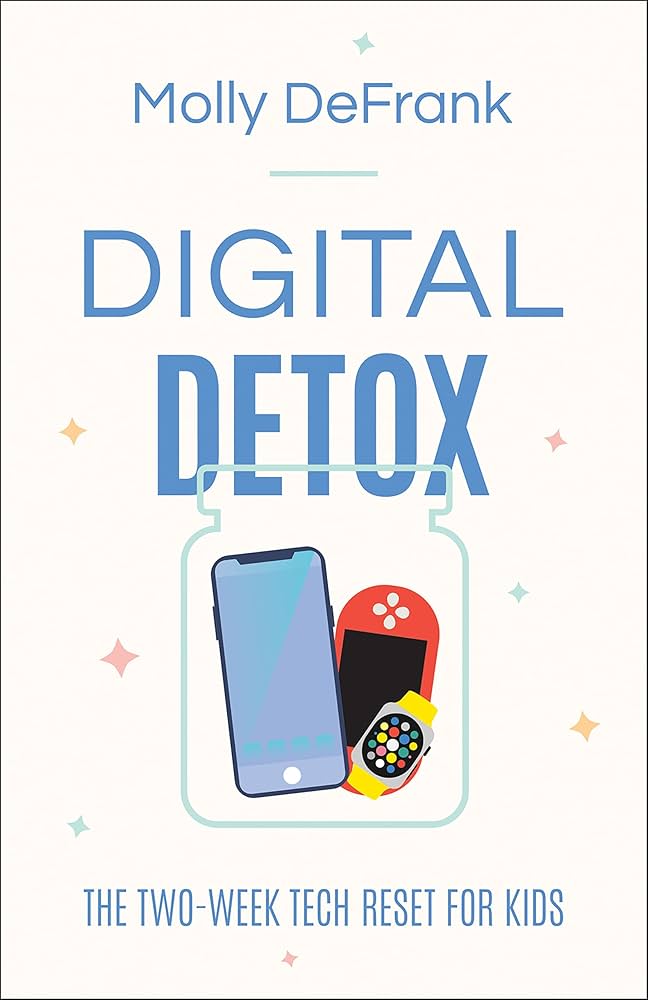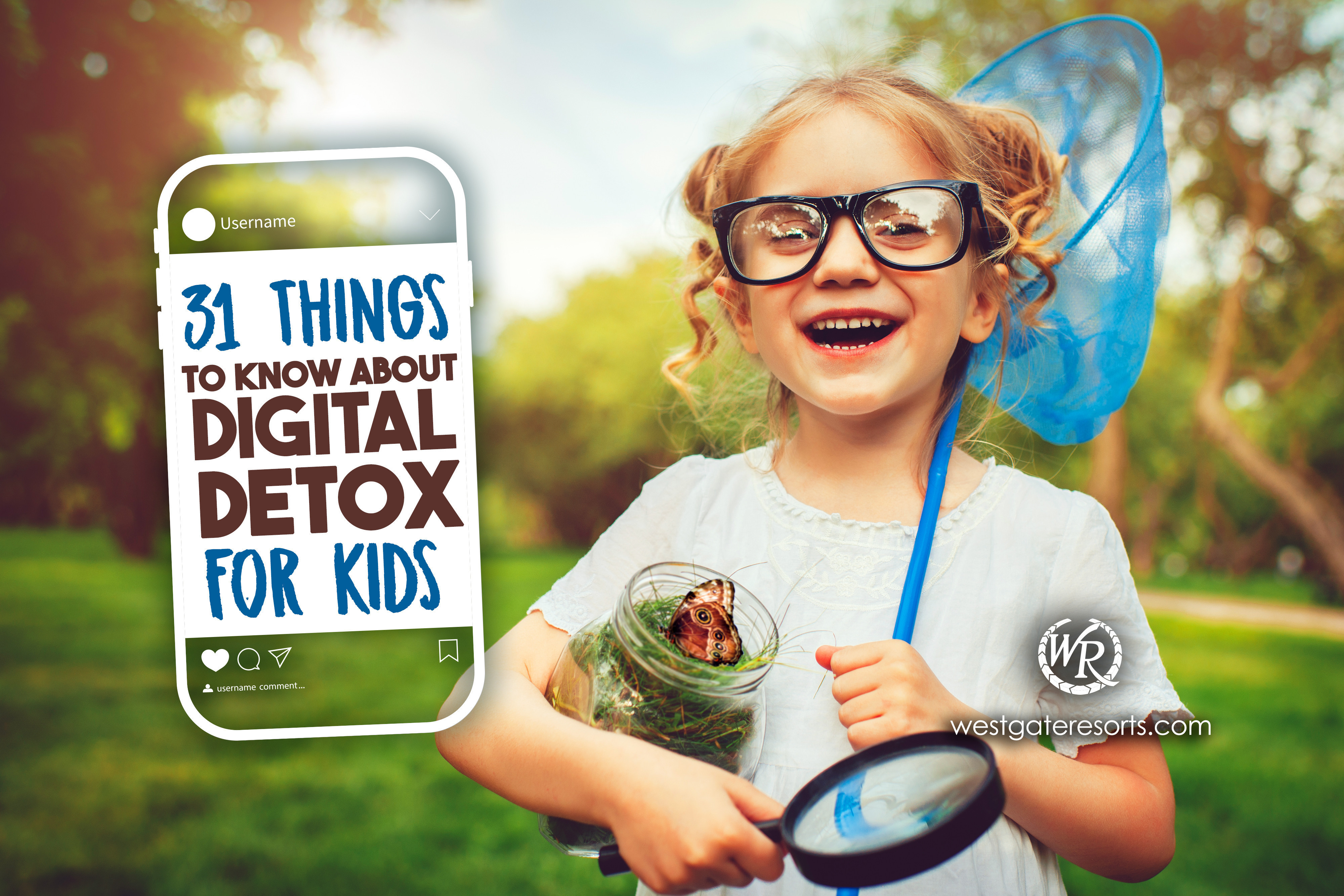Digital Detox for Kids and Teens: Why It’s Crucial and How to Implement It
In today’s digital age, kids and teens are growing up in an environment where screens are omnipresent. Whether it’s smartphones, tablets, computers, or gaming consoles, digital devices are a significant part of their daily lives. While technology offers educational and entertainment opportunities, excessive screen time can have negative effects on their mental health, social skills, and physical well-being. This is where the concept of a digital detox comes into play.
A digital detox for kids and teens is a structured period during which they disconnect from their digital devices to focus on other activities, promote mental well-being, and reduce the potential negative effects of technology. In this article, we will explore the importance of a digital detox for children and teenagers, the benefits, and how to implement an effective detox strategy.

Why is a Digital Detox Important for Kids and Teens?
In a world where social media, video games, and instant messaging apps are central to daily life, kids and teens are often spending an unhealthy amount of time in front of screens. The rise of online learning, virtual social interactions, and entertainment streaming platforms has led to increased screen time. But why should a digital detox be a priority for young people? Here are some of the key reasons:
1. Reduced Screen Dependency
Excessive screen time can lead to dependency, making it difficult for kids to engage in other activities that don’t involve technology. This dependency can contribute to feelings of isolation or a lack of interest in hobbies or physical activities.
2. Improved Mental Health
Research shows that increased screen time, particularly on social media, is linked to anxiety, depression, and sleep disturbances. By disconnecting from digital devices, children and teens can reduce stress levels and improve their overall mental well-being.
3. Enhanced Physical Health
Extended screen time is associated with sedentary behavior, leading to health problems like obesity, poor posture, and eye strain. A digital detox encourages kids to engage in physical activities, improving their physical health.
4. Strengthened Social Skills
When kids and teens are constantly immersed in digital interactions, they may struggle with face-to-face communication. A digital detox offers an opportunity to nurture real-world social skills and build deeper relationships with peers and family members.
5. Better Sleep Patterns
Exposure to the blue light emitted from screens can disrupt the production of melatonin, the hormone responsible for regulating sleep. Limiting screen time, especially before bed, allows for better sleep hygiene and healthier sleep patterns.
Signs Your Child or Teen May Need a Digital Detox
While screen time is a normal part of modern life, it’s essential to recognize when it’s becoming problematic. Here are some signs that your child or teen may benefit from a digital detox:
- Increased irritability or anxiety when not using devices.
- Spending more time on screens than engaging in real-life activities, such as playing outside, reading, or having meals together.
- Lack of interest in offline activities or hobbies.
- Difficulty falling asleep or disrupted sleep due to screen use.
- Negative impacts on schoolwork or productivity due to distractions from digital devices.
- Social withdrawal or decreased face-to-face interaction with family and friends.
Benefits of a Digital Detox for Kids and Teens
A digital detox can offer several benefits for kids and teens, including:
1. Improved Focus and Concentration
Reducing screen time helps children and teens regain their ability to focus on tasks at hand, whether it’s homework, reading, or playing. This enhanced concentration can lead to better academic performance and increased productivity.
2. Strengthened Emotional Resilience
By stepping away from digital distractions, kids can develop better emotional resilience. They will have the opportunity to work through challenges without relying on technology for emotional support or escapism.
3. Boosted Creativity
Unstructured, screen-free time fosters creativity. Kids and teens can explore their imagination through drawing, writing, or building, which leads to improved cognitive development.
4. Strengthened Family Connections
Spending more time together as a family without digital distractions can help foster stronger emotional bonds, improving communication and creating shared experiences.
5. Better Sleep and Energy Levels
By avoiding screen use before bed, children can develop healthier sleep habits, leading to improved energy levels, better mood, and higher cognitive function.
How to Implement a Digital Detox for Kids and Teens
Implementing a digital detox for your child or teen requires planning, commitment, and the right balance. Here are some actionable steps you can take to make the process more effective:
1. Set Screen Time Limits
Start by establishing clear screen time limits for different activities. The American Academy of Pediatrics recommends that children aged 2 to 5 should have no more than one hour of screen time per day, while children aged 6 and older should have consistent limits that promote healthy activities.
2. Create Tech-Free Zones
Designate areas in your home, such as the dining room, living room, or bedroom, as tech-free zones. This ensures that there is always a space where your child or teen can focus on activities without the temptation of screens.
3. Plan Screen-Free Activities
Encourage your child or teen to engage in offline activities like outdoor sports, board games, cooking, reading, or arts and crafts. Try setting up a family activity plan that includes activities everyone can enjoy without the use of devices.
4. Use Screen Time Monitoring Tools
To help enforce limits, you can use screen time monitoring apps that allow you to track and control your child’s screen usage. Some of these apps even provide weekly reports so you can monitor progress and make adjustments as needed.
5. Lead by Example
As a parent or guardian, it’s important to model healthy screen time habits. Set aside your own devices and participate in the detox challenge with your child or teen. This will reinforce the importance of the digital detox and show them that it’s possible to enjoy life offline.

6. Make it Fun and Rewarding
Turn the detox into a fun and engaging challenge. Reward your child or teen with small incentives like an outing, a special treat, or an extra hour of screen time after successfully completing a set period of tech-free time.
Digital Detox Tips for Parents
As a parent, managing your child’s or teen’s screen time can be challenging. Here are some extra tips to help ensure a successful digital detox:
- Communicate openly: Explain the reasons behind the detox and how it benefits both their mental and physical health.
- Be flexible: Not every day needs to be screen-free. Gradually ease into the detox and allow flexibility to accommodate schoolwork or important communication.
- Offer alternatives: Help your kids find alternative activities that are engaging and enjoyable. Take them on hikes, to museums, or even just explore new board games.
- Set tech-free family times: Dedicate specific times for family interaction, such as tech-free meals or movie nights.
Frequently Asked Questions (FAQs)
Q1: How often should I enforce a digital detox for my child or teen?
A1: The frequency of a digital detox depends on your child’s or teen’s current screen habits. A detox once a week or during weekends is ideal, but it’s important to incorporate consistent screen time limits throughout the week.
Q2: Can a digital detox help my teen with social media addiction?
A2: Yes, a digital detox can help break the cycle of excessive social media use. It allows teens to disconnect and take a break from the pressures of online interactions.
Q3: How long should a digital detox last for my child or teen?
A3: The length of the detox can vary. Start with a few hours or a day and gradually increase the duration based on the child’s needs. A weekend detox or even a weeklong break can provide significant benefits.
Q4: What are some good screen-free activities for kids?
A4: Some great alternatives to screen time include outdoor games, crafts, reading, puzzles, board games, and spending quality time with family members.
Q5: Will a digital detox improve my child’s sleep?
A5: Yes, reducing screen time, especially before bed, can improve sleep quality and help your child or teen fall asleep faster.
Conclusion
A digital detox for kids and teens is more than just a temporary break from screens; it’s an investment in their long-term health, happiness, and well-being. By implementing a detox challenge, you can help your child or teen regain control over their screen time, improve their mental and physical health, and encourage them to engage more fully in life. It’s time to create healthier digital habits for your kids and teens—because the future of their well-being is worth it.


